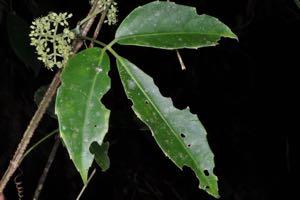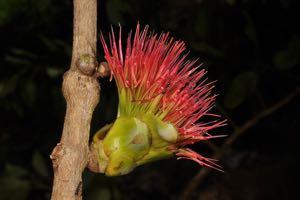Jasper John Obico
My project aims to provide the first information about the patterns of genetic diversity and connectivity in Cebu forest fragments using Tetrastigma loheri and Lepeostegeres cebuensis to inform conservation management.

The island of Cebu in the Philippines has suffered the worst case of deforestation in the country and the devastation has only left few remaining forest fragments, which represent 0.2% of the original forest cover in the island. These few remaining forest fragments are important habitats to unique and threatened forest species such as birds, mammals, and plants. Presently, there is no information about the patterns of genetic diversity and connectivity of these forests fragments. Genetic diversity is important because it is a source of adaptation of the population to critical changes in the environment. When genetic connectivity decreases or stops between fragmented populations, loss of genetic diversity is highly possible especially in small and isolated populations. Loss of genetic diversity makes a population less adaptable and at risk of extinction. Thus, information about patterns of genetic diversity and connectivity provides an essential baseline for the conservation of these last forest patches.

Our proposed study aims to use microsatellite data from the forest vine, Tetrastigma loheri, to provide the first data about patterns of genetic diversity and connectivity in the remaining forests of Cebu. Because it is bird-dispersed and a common forest species, T. loheri is potentially a suitable species for studying patterns of genetic connectivity in other areas in the Philippines as well. However, the use of T. loheri as an indicator of these patterns is currently limited by taxonomic controversies. The proposed study therefore also aims to resolve the taxonomic delimitation of the T. loheri complex. In order to draw general conclusions about the usefulness of T. loheri as an indicator species, its observed patterns of genetic diversity and connectivity will be compared with another Cebu forest species, Lepeostegeres cebuensis, a poorly known Cebu endemic mistletoe species that has the same dispersal syndrome as T. loheri.
We believe that the success of our proposed project and the translation of its results into effective conservation management in Cebu can only be assured with the help of local stakeholders and by providing them capacity building opportunities. Through the involvement of local stakeholders, our project will also result in an increased local awareness and appreciation of biodiversity, and communities that are more strongly engaged in protecting their natural heritage. This project will therefore be carried out in partnership with the Philippines Biodiversity Conservation Foundation Inc. and Cebu Technological University-Argao and will involve the other stakeholders as part of a capacity-building workshop.